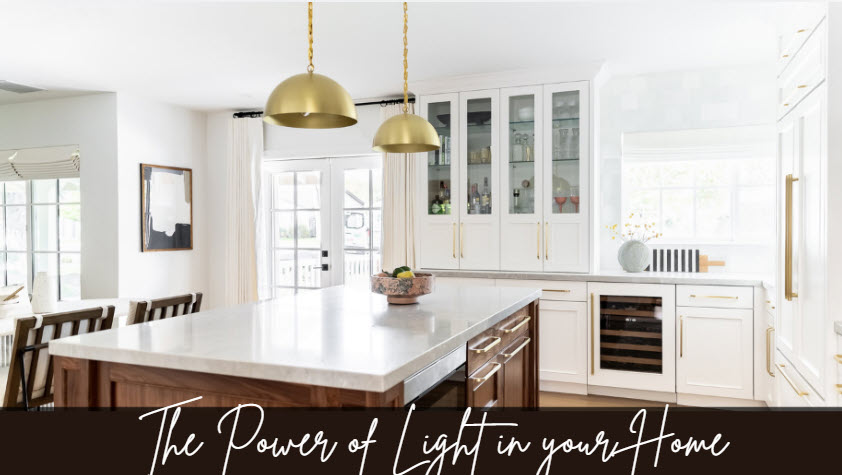Should You List Your Omaha Home in October or Wait Until Spring?

It's a question we hear all the time at the Heim-Berg Team, usually from homeowners standing in their kitchen looking out at the fall leaves and wondering if they've already missed their window. The weather is getting colder, Halloween decorations are going up around the neighborhood, and conventional wisdom says spring is the time to sell a house. So, should you pack it in for the year and wait until the daffodils bloom?
Not so fast. We've helped hundreds of families sell their homes throughout the Omaha metro area, from the historic charm of Dundee to the newer developments in Elkhorn. Over the years, we've learned that the "spring is best" rule isn't nearly as absolute as most people think. In fact, listing your Omaha home this October might be one of the most intelligent decisions you could make.
Let's have an honest conversation about what's really happening in the Omaha real estate market right now and help you figure out the best timing for your specific situation.
Let's begin by talking about the Spring selling myth and why everyone thinks spring is the magic season for selling homes. There's some truth to it, sure. The weather is beautiful, flowers are blooming, lawns are green, and families with kids prefer to move during summer break. Historically, spring has brought more buyers into the market, resulting in increased competition among buyers and potentially higher sale prices. Drive through any Omaha neighborhood in April or May, and you'll see For Sale signs popping up like dandelions.
But here's what conventional wisdom misses. When spring is the busiest time for buyers, it's also the busiest time for sellers. That beautiful Saturday in May, when twelve families are out touring homes? There are probably twenty new listings for them to choose from. Your charming bungalow in Benson is competing with every other charming bungalow that just hit the market. More buyers sound great until you realize there are also many more options for those buyers to consider.
October is an entirely different story. We understand that when our clients tell us, there are fewer buyers actively looking right now. But there are also dramatically fewer homes on the market. What you may not know is that the buyers who are out there looking in October aren't the casual browsers planning six months. They're serious, motivated buyers who need to find a home, and they're facing limited inventory. When we list a well-prepared home in October, it often stands out in a way that the same home simply couldn't in the spring feeding frenzy.
So, who are these buyers who actually buy a home in the fall or winter? One of the biggest misconceptions about fall selling is that only desperate buyers are looking at it during this time of year. That's not true based on what we see every single year in the Omaha market. October through December brings out some of the most qualified, motivated buyers you'll ever encounter.
We're discussing corporate relocations that need to be finalized by year-end. These buyers often have company assistance with their move, they're financially solid, and they need to find something quickly. They can't afford to wait until spring, and they're usually more willing to pay fair market value for the right property because time is more important to them than squeezing out every last dollar innegotiation.
Then there are the buyers who've been searching since spring or summer and haven't found what they want. By October, they're getting serious. They've seen enough homes to know exactly what they're looking for, they're pre-approved and ready to move, and they're frankly a little tired of the process. When they find the right home, they act fast.
You also get buyers whose life circumstances have changed. Job promotions, growing families, divorces, or empty nesters who are finally ready to downsize don't wait for spring to start house hunting. Life happens year-round, and so does real estate.
Local buyers from right here in Omaha who want to take advantage of current market conditions are also out there. Some have been watching interest rates, some have finally saved their down payment, and some want to be settled before the holidays. These aren't tire kickers. These are people ready to buy.
When you list your Omaha home in October, you're working with several distinct advantages that don't exist in spring. Let's walk through what that looks like in practice.
The reduced competition means your home gets more attention. When there are only three or four comparable homes on the market in your neighborhood instead of fifteen, guess what? Buyers look at all of them carefully. Your home isn't getting lost in the shuffle. Every showing matters more, and buyers are taking each property seriously because they know their options are limited.
The buyers who are looking right now tend to move faster. In the spring, buyers often take their time, touring homes for months and waiting to see what else comes on the market. October buyers don't have that luxury. They know inventory is limited and winter is coming. When they like your home, they make offers quickly. We've seen fall sales move from listing to closing in six weeks, whereas the same scenario in spring might take three or four months, with showings and multiple contingencies.
Less competition also means fewer bidding wars, which sounds counterintuitive, but hear us out. While spring often brings multiple offers, these situations can work against sellers when buyers become frustrated and walk away entirely, or when deals fall apart during contingency periods. October typically brings more straightforward transactions with realistic buyers who make solid offers the first time.
There's also a psychological advantage to buyers touring homes in the fall. On a chilly fall afternoon in Omaha, your home feels especially comforting and appealing with the cozy fireplace crackling, as potential buyers walk in. Buyers can picture themselves living there during Nebraska winters. That emotional connection is harder to create when everyone's thinking about summer humidity, patios and swimming pools.
There are circumstances when selling in the current tax year makes more financial sense than waiting until the next year. Every situation is different, but it's worth discussing with yout tax professional and considering so you can make your best financial decision. From a practical standpoint, you can close before the end of the year, which offers you potential tax advantages.
In some situations, October listings just make sense, and we can usually identify them quickly when we sit down with sellers. If you've already purchased another home or you're relocating for work, waiting until spring could mean carrying two mortgages for months or dealing with the stress of temporary housing. The cost and hassle of waiting far outweigh any potential price advantage you might get from spring timing.
If your home is in move-in-ready condition right now, you've got a tremendous advantage. Fall buyers are often seeking homes they can move into quickly without extensive renovations. If your house looks beautiful today, why wait six months when it might not look as good after another winter of wear and tear?
Empty nesters with grown kids don't face the school calendar constraints that make spring so appealing to families. If that's your situation, you're competing in a less crowded market segment by listing now. The same goes if you don't have specific timing needs that require a spring sale. Sometimes the best time to sell is when you're ready.
Market conditions matter too. If Omaha inventory is particularly low right now and you know several comparable homes in your area just sold, striking while conditions are favorable can be smarter than gambling on what spring might bring. Our team constantly monitors Omaha real estate market trends, and we can provide you with specific data about your neighborhood so that you can make an informed decision.
Now, we're not going to tell you that October is always the correct answer, because it's not. Waiting for the Spring market may be a better choice for you. There are situations where waiting makes more sense, and part of our job is being honest about that.
If your home needs significant work before it can be listed, waiting might give you time to complete those projects properly. Rushing to get your home on the market when it's not ready never ends well. A spring timeline gives you winter to paint, update, repair, and stage your home so it looks its absolute best. Fall buyers are particularly unforgiving of deferred maintenance because they assume they'll be dealing with winter issues immediately.
Major exterior issues are especially problematic for fall listings. If your roof needs replacement, your siding is deteriorating, or your driveway is cracked and damaged, these problems are exacerbated when buyers are already considering winter. Nobody wants to close on a house in November and immediately face roof leaks during the first snowstorm. If you can address these issues over the winter and list everything in top shape by spring, that might be your best play.
Your personal timeline matters too. If you have nowhere to go and you're not in a hurry, why create unnecessary pressure? If you genuinely want to spend one more holiday season in your home or you're not emotionally ready to move yet, don't force it. Real estate should work around your life, not the other way around.
Families with school-age children face real constraints. Moving during the school year is genuinely harder on kids, and most families prefer to make the transition during summer break. If you have kids in Omaha Public Schools, Millard, or Elkhorn, and maintaining their school year stability is your priority, then listing in the spring and moving in the summer makes perfect sense. There's nothing wrong with timing your sale to coincide with your children's needs.
Local market conditions suggest waiting. If we notice a significant amount of inventory buildup in your specific neighborhood or price range, or if there are indications that spring may bring better conditions, we'll let you know. Sometimes patience is the right strategy, and we've never been afraid to advise our clients to wait when waiting is in their best interest.
If you decide to list this October, your approach should reflect the season and the buyer's mindset. This isn't the time for bright, airy summer staging. You want your Omaha home to feel warm, inviting, and move-in ready for fall and winter, so how can you make it shine in October?
Your home's exterior matters even more in October, as buyers are already considering how it will withstand Nebraska winters. Your lawn should be neatly maintained even as it goes dormant. Leaves need to be raked consistently, not just once. Your gutters should be clean and in good working condition. Any loose shingles, damaged siding, or cracked concrete needs to be addressed before listing. Buyers touring in October are mentally checking off winter preparedness, and any signs of neglect become bigger red flags than they would be in spring.
Create a welcoming entrance that conveys this home is well-maintained and ready for new owners. Seasonal touches, like mums on the porch or a tasteful wreath on the door, are delicate, so avoid overdoing it with Halloween decorations. You want buyers to picture themselves here, not admiring your creativity.
Inside, the goal is cozy but not cluttered. Natural lighting is more limited in the fall, so ensure all your curtains are open during showings and that every light in the house is on. We mean every light: table lamps, overhead fixtures, even closet lights. A bright home feels more welcoming and spacious, especially on gray October days.
If you have a fireplace, this is your moment. A fire during showings creates an ambiance that you literally cannot replicate any other time of year. Buyers walk into a warm home with a fire going, and they emotionally connect with the space. That feeling stays with them after they leave.
Temperature control is also essential. Your home should be comfortably warm but not stuffy. Around seventy degrees is perfect. Nothing turns off buyers faster than walking into a cold house on a chilly day. They'll assume the heating system doesn't work well, even if you've just turned it down to save energy.
The fall smell issue is real. Homes can smell musty or closed in when we no longer open windows regularly. Make sure your home smells fresh and neutral. Skip the pumpkin spice candles unless they're very subtle. Strong artificial scents suggest that you're trying to cover something up. Fresh, clean, and neutral always wins.
Your home should feel move-in ready, especially when it comes to winter systems. Buyers will want to know that the furnace, water heater, and insulation are all in good shape. Having recent service records available demonstrates that you have properly maintained the home, giving buyers confidence.
We believe that nothing is more important than the data and the numbers to get our clients top dollar for their home. Let's discuss what happens to home prices between October and spring in the Omaha market, as this is where a lot of confusion exists. Some people will tell you that homes listed in spring sell for more money, and that's sometimes true when you look at broad averages. But averages don't tell the whole story.
Spring does typically bring slightly higher average sale prices across the market, but that difference is often just a few percentage points, not the dramatic gap that makes waiting six months worthwhile. We typically discuss differences of two to four percent when comparing well-prepared homes in similar conditions.
Here's what really matters for your situation. What will your specific home sell for this October compared to next spring? That depends on your neighborhood, your price point, the condition of your home, and current local inventory levels. It also depends on what might happen in the market between now and spring. Interest rates could go up, making homes less affordable. More inventory could flood your neighborhood in spring, increasing competition. Economic conditions could shift. Nobody knows for sure.
You also have to factor in your carrying costs. Six months of mortgage payments, utilities, insurance, maintenance, and property taxes add up quickly. If waiting until spring costs you fifteen thousand dollars in carrying costs and your home might sell for ten thousand dollars more, you haven't really come out ahead. And that assumes everything goes perfectly and you sell quickly in spring, which isn't guaranteed.
There's also the value of having your money freed up sooner. If you sell in October and close by Thanksgiving, that equity is working for you six months earlier than if you wait for spring. Whether you're buying another home, investing, or just eliminating the stress of owning a property you're trying to sell, there's real value in getting the transaction done.
If you're genuinely torn about whether to list now or wait, you do have a middle path using the "prep now, decide later," hybrid approach we often recommend. Get your home ready to list this October. Get the inspection done, make the necessary repairs, declutter, stage, and prepare your home for sale. Take professional photos while the fall colors are still beautiful. Get everything ready to go.
Then sit down with us and look at current market conditions specific to your home. We can provide you with comparable sales from this fall, current active listings in your area, and offer realistic pricing guidance. We can also discuss what we're seeing in terms of buyer activity and inventory trends.
At that point, you can make an informed decision. You could list immediately because the conditions are perfect. You could wait a month and list right before Thanksgiving when inventory is at its absolute lowest. Alternatively, you could hold off until spring, but now your home is ready to go, and you've eliminated the stress of the spring rush.
The prep work isn't wasted regardless of your decision. Your home needs those repairs and improvements anyway. You'll get better photos in October than you will in gray, slushy March. And you'll have the peace of mind that comes from making a decision based on real information rather than assumptions.
At the end of the day, the right time to sell your Omaha home isn't determined by the month. It's determined by your needs, your home's condition, your local market conditions, and your goals. So trust YOUR situation and not the calendar. We've seen incredible sales happen in October, November, and even December. We've also seen spring sales that went precisely as planned. Both approaches can work beautifully when the timing matches the circumstances.
What doesn't work is making your decision based on outdated conventional wisdom or what your neighbor's cousin's friend did three years ago. The Omaha real estate market changes constantly, and what worked perfectly for someone else might not be the right move for you.
That's where having experienced local advisors makes all the difference.
We live and work right here in Omaha. We know these neighborhoods inside and out, from Dundee to Elkhorn, West Omaha, and Papillion. We see every listing, every sale, and every market shift as it happens. We're not sure whether the October listing makes sense for your specific home. We're examining real data from your actual neighborhood and providing you with honest guidance based on what we're currently observing.
Some agents will tell you whatever they think you want to hear to get your listing. We'd rather have an honest conversation up front and help you make a decision that's genuinely best for you, even if that means advising you to wait.
One thing we're sure about is that every client and every situation is unique. That said, if you're considering selling your Omaha home and you're not sure if listing in October makes sense or not, or if you should wait until spring, then give us a call to talk about your specific situation. We can assess your home, discuss your timeline, review the current market conditions in your neighborhood, and provide you with honest, data-driven guidance on the best approach for your situation.
October is ideal for you, and you could be under contract within a few weeks. Waiting makes more sense, and we can create a spring strategy that sets you up for success. Alternatively, there's a hybrid approach that offers maximum flexibility. We won't know until we talk, and that conversation costs you nothing but a bit of time.
The one thing we can promise is that we'll be straight with you about what we're seeing, what we recommend, and why. After decades of helping Omaha families navigate these exact decisions, we've learned that the best results come from honest communication and strategies tailored to each seller's unique situation.
Don't spend the next few months second-guessing your timing or wondering what you should do. Let's figure it out based on what's happening in the market right now and what makes sense for your life.
Contact the Heim-Berg Team at (402) 607-9024 or visit us at www.omahaarealiving.com. We're here to help you make the most intelligent decision about your home sale timing, and we're ready to guide you through every step of the process whenever you're ready to move forward.
Your Omaha home is one of your most valuable assets. Let's ensure you make the best possible decision about when and how to sell it.


















